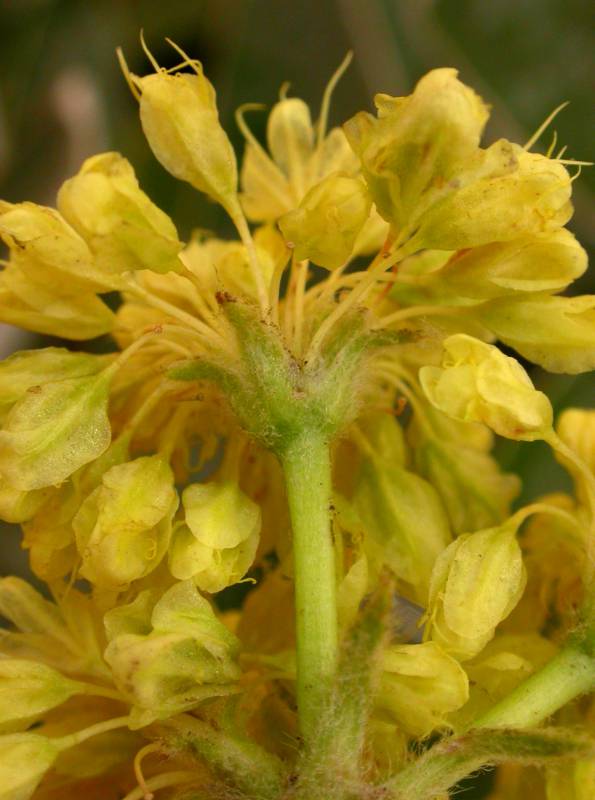Eriogonum flavum
Eriogonum compositum
yellow buckwheat
arrow-leaf buckwheat, northern buckwheat
Basal, closely crowded, usually more or less gray-woolly, especially below, linear to narrowly oblanceolate, 3-7 cm. long with a petiole about the same length.
Basal, lanceolate to deltoid, more or less cordate-based, white-woolly beneath and green above, on petioles as long to several times as long as the blade.
Flowering stems leafless, 5-20 cm. long; inflorescence a simple umbel, rays up to 3 cm. long, subtended by 4-6 somewhat leafy bracts;
involucre covered with soft hairs, cone-shaped, 4-7 mm. long with 4-5 shallow lobes;
tepals 4-6 mm. long, usually pale to deep yellow but sometimes rose-tinged, covered with soft, silky hairs, and with a short, stipitate base.
Flowering stems stout and naked, the inflorescence a compound umbel 2-20 cm. broad, with linear bracts at the base of both primary and secondary umbels;
involucres 6-10 mm. long, lobed about half their length, the lobes usually reflexed: tepals either creamy-white or lemon-yellow, about 5 mm. long, with a stipe-like base about 1 mm. long.
Eriogonum flavum
Eriogonum compositum
- Local floras:
BC,
OR,
WA
- Local Web sites:
Flora NW,
PNW Herbaria
WildflowerSearch
iNaturalist (observations)
USDA Plants Database
- LBJ Wildflower Center
- SEINet
- Plants of the World Online
- Encyclopedia of Life
- Wikipedia
- Google Image Search



